Contents
A perennial aster is a flower that is often undeservedly ignored. The shrub plant, numbering more than five hundred species, is distinguished by its unpretentiousness and the ability to grow in almost any conditions. There are many types and varieties of perennial asters, they all have different bush heights, differ in flowering time, size, shape and color of inflorescences. In recent years, perennial asters have become more often used in landscape design: these flowers have found their place in the frame of borders and borders, tall bushes serve as a backdrop for other perennials and conifers, compact ground cover asters adorn rockeries and alpine hills.
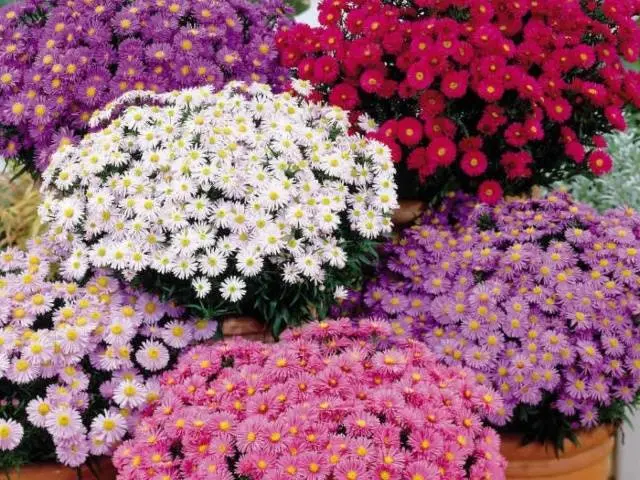
All information about the bush perennial aster, with a list of varieties and photos, is collected in this article. Here the most popular perennial flower species in temperate climates will be listed, a brief description of the best varieties will be given, and the rules for growing bush asters will be described.
Description and characteristics
Aster perennial bush belongs to the family Asteraceae or Compositae. It is this plant that is the true aster, while the more famous annuals belong to a completely different family of flowers (Kalli-stephus).
In nature, perennial asters can be found in Europe and Asia, in North Africa and North America. Ornamental shrubs began to grow in flowerbeds due to their late flowering and suitability for cutting: in the autumn garden, perennial aster is one of the few bright spots.

Shrub asters can be recognized by the following signs:
- plant rhizomatous herbaceous type;
- the stems of the aster are straight branched;
- bush height can vary from 25 to 160 cm;
- the leaves are dark green in color, have a lanceolate shape;
- the size of the leaf plates towards the top of the stem gradually decreases;
- bush aster inflorescences – baskets, the diameter of which can be from 1 to 7 cm;
- the edges of the inflorescence are reed-shaped, and in the middle of the aster there are tubular yellow petals;
- shades of asters can be very different: white, pink, blue, purple, burgundy and others;
- the structure of the flower is simple, semi-double or double;
- flowering of this plant is long – about 35-40 days;
- bush varieties are photophilous, do not tolerate extreme heat and drought;
- the plant is unpretentious to the composition of the soil, grows well on heavy and clay soils (aster shows itself best on humus soil);
- perennials perfectly tolerate frosts, so they can winter in the middle lane without shelter;
- every 5-6 years, aster bushes need to be divided and planted;
- Flowers reproduce by seeds and division.
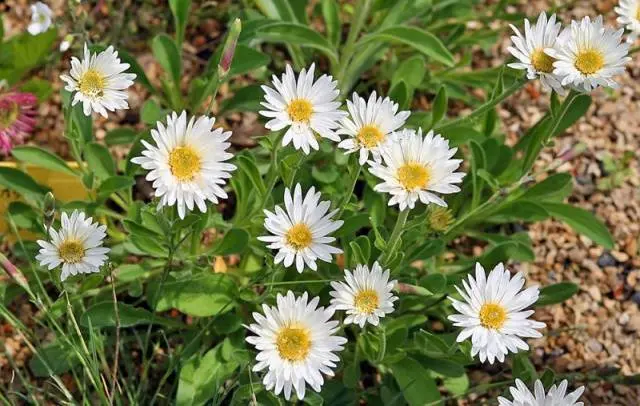
Perennial classification
The variety of varieties of perennial asters is so great that only from this flower one can create the most interesting compositions in which plants differ not only in appearance, but also in the timing of flowering.
Types of perennial asters, depending on the time of flowering:
- Early varieties bloom already at the end of May and continue to delight the eye until the last days of June (these varieties are also called spring).
- summer asters have an average flowering time – from July to the end of August.
- Late or autumn flowers open their buds with the advent of September, and their flowering ends with severe frosts and snow.

Some experts also divide the types of perennial asters depending on the height of the plants. It turns out three groups of varieties:
- Undersized or curb aster has a maximum height of 25-30 cm. This flower resembles a ground cover, therefore it is successfully used in the design of now fashionable rockeries and alpine slides.
- Garden asters have average parameters of bushes – about 40-70 cm. Most often, such a plant resembles a ball in shape, the bushes look neat and elegant, harmonize perfectly with other plants, and can frame hedges and garden paths.
- Perennial tall asters they can have a maximum height of 150-160 cm. It is better to use such flowers in the center of the flower bed: all season tall shrubs will delight with lush greenery, and closer to autumn they will bloom a lot of colorful inflorescences.
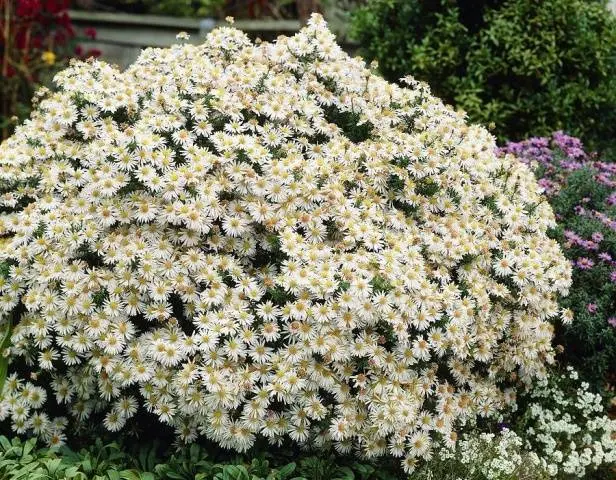
Common types of perennials
Since there are a lot of varieties of perennial asters (and this variety is easy to see in the photo), experts suggest dividing spray flowers into several types. It is the species characteristics that will help an inexperienced grower quickly determine the flower variety, because they take into account the flowering time, plant height and growing conditions.
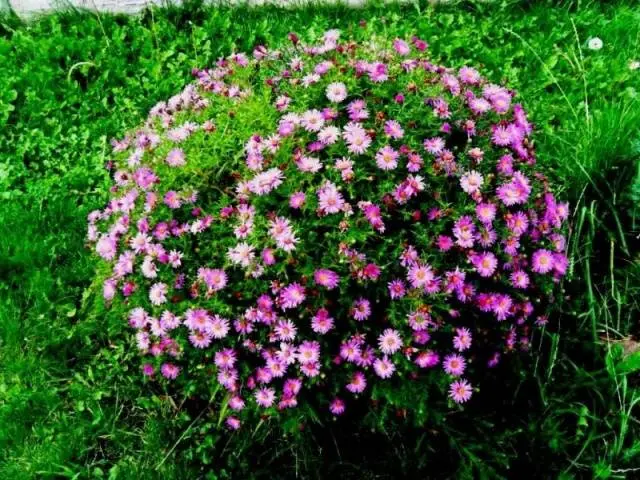
The most popular types of perennial bush asters in Our Country will be listed below.
Alpine
The Alpine group of asters loves the sun most of all and tolerates even severe frosts. The inflorescences of these plants are single baskets of large sizes, the diameter of which is 2-6 cm.
Alpine varieties begin to bloom in the second year after planting. They belong to spring flowers, that is, early flowering periods – from May to June. As a rule, these plants are low – about 30 cm. A distinctive feature is a very lush flowering, inflorescences similar to daisies. Flowering time is approximately 30 days.
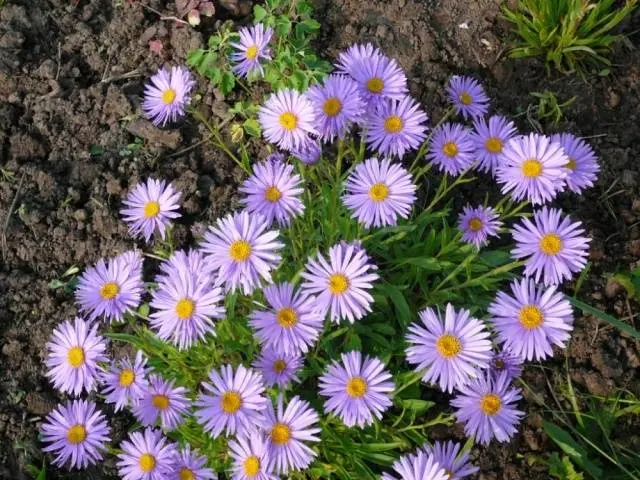
Italian
Italian aster is a representative of the summer subspecies of flowers. This is a taller perennial, reaching 60 cm and blooming from July to late August. The inflorescences of these asters are collected in thyroid baskets with a diameter of about 4 cm.
In all varieties of the Italian species of asters, the inflorescences are painted in lilac-blue shades. The seeds of these plants ripen at the end of September.
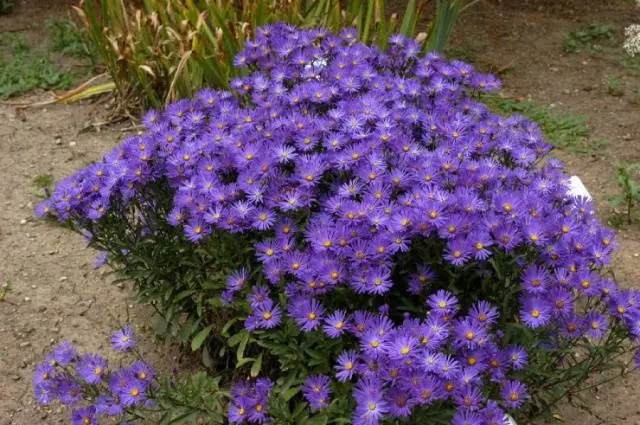
Bessarabskaya
Another summer flower, the height of the bushes of which can reach 75-80 cm. There are many inflorescences on the shrub, all of them are painted in shades of purple. It is easy to recognize this species by the dark brown center of the inflorescence.

New England
The New England aster is often called American, it is a shrub from the autumn group. Baskets of such varieties open in September and delight with lush flowering all autumn. Autumn frosts are not dangerous for the New England aster; its flowering can continue even under snow.
The standard, highly branched stems of New England varieties can grow up to two meters. The inflorescences are large, about 4 cm in diameter, 25-40 flowers are collected in large brushes.
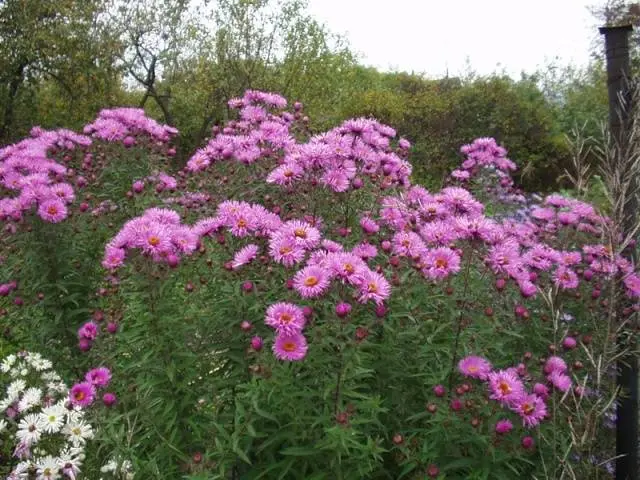
New Belgian (Virgin)
The height of perennial bushes can vary greatly depending on the variety, and varies from 40 to 150 cm. The stems of this aster are vigorous, lignified, and hairless. The inflorescences are collected in panicles, their diameter is average – about 2 cm.
The color of the New Belgian aster is predominantly pink-lilac. The species blooms in September. A feature is a very dense arrangement of inflorescences, between which foliage is practically invisible.

The bushy
In bush asters, the stems are soft, pubescent, reaching a height of 50 cm. Inflorescences about 3 cm in diameter are scattered over the entire surface of the bush, their shape is sparsely corymbose.
Creeping varieties are also found in the group of shrub perennial asters. The dwarf variety can be used as a groundcover.
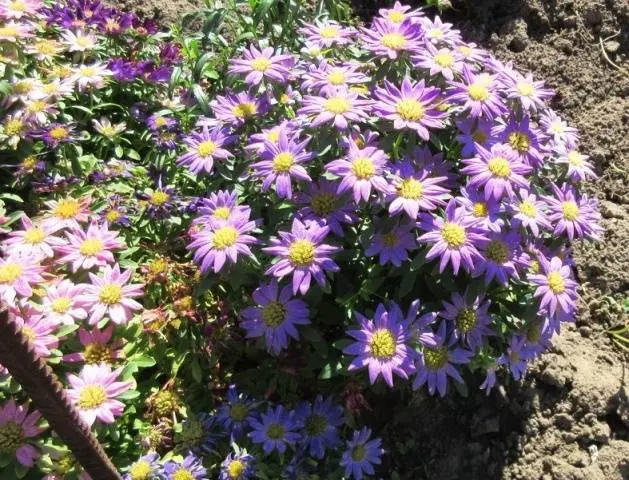
Ageratoid
Photos and names of agerat-like varieties of perennial bush aster are less popular, because these plants are not so much decorative as medicinal. The stems of such flowers are straight, smooth, growing up to 100 cm. The inflorescences are painted in a blue tint, small, collected in corymbs.
For medicinal purposes, all parts of the ageratoid aster are used: stems, leaves and flowers.
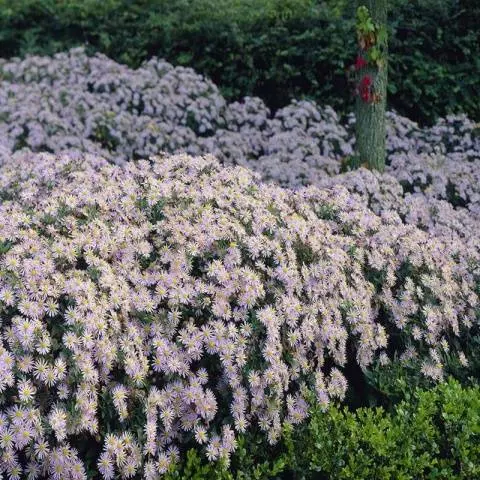
spherical
Aster spherical perennial is distinguished by the shape of a bush, which is a perfectly regular ball. The height of this plant is average – about 40-50 cm. The inflorescences are not large, but there are a lot of them on the shoots. The flowers of the spherical aster are pink, and the middle is small, has a yellow color.
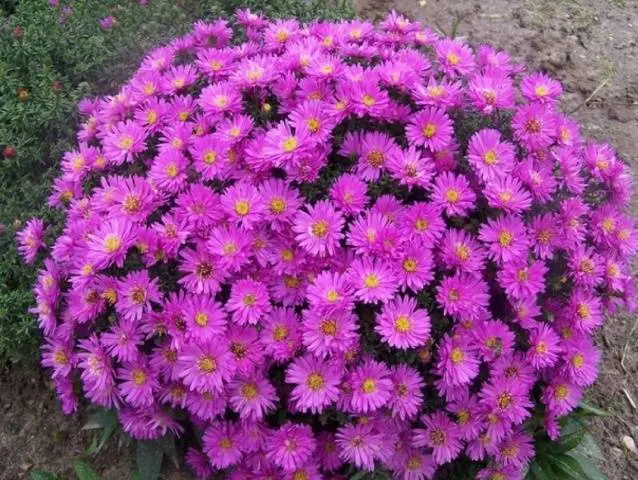
Terry
In terry perennial varieties, the inflorescences are very dense, sometimes they resemble colorful balls. The structure of the flower is complex, reed petals are arranged in several rows. The color of the asters may be different.
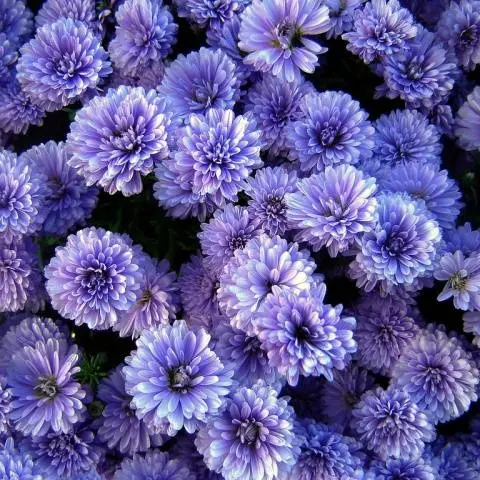
Heather
Heather aster differs from other species in the structure of inflorescences and the appearance of the bush. The shoots of this plant tend to the ground, and the bushes are pyramid-shaped. The height of the bushes is decent – about a meter. Inflorescences bloom in September.
The heather aster flowers themselves are small, but their abundance creates the feeling of a solid carpet. Flowers are painted in light shades (white, pink). Most of all, this type of perennial is suitable for growing in parks and squares, decorating gardens.
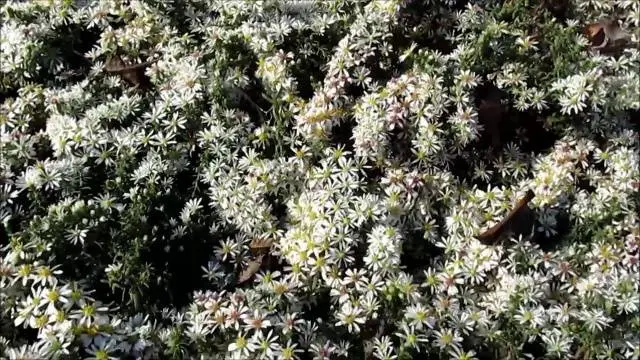
Tatarskaya
Another medicinal plant is the perennial Tatar aster. The bushes of this flower grow up to one and a half meters, its inflorescences are small, pale pink or dull blue.
A distinctive feature is a large bright yellow center, which gives the shrub a decorative effect. The Tatar aster loves moisture and coolness; in nature, the flower grows along the banks of reservoirs and on forest edges.
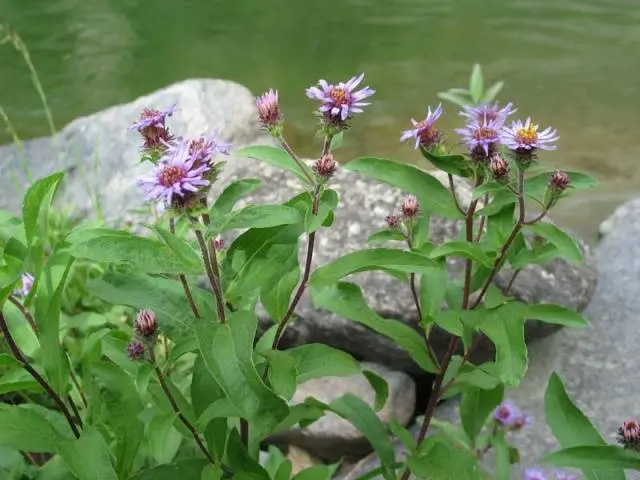
Popular varieties
It is impossible to list all varieties of perennial asters. Today, these flowers are only gaining popularity, so it is difficult to find a very wide range of seeds and shoots for sale.
The following perennial varieties are considered the most beautiful and bright flower growers.
Jenny
The medium-sized bushes of this aster are shaped like hemispheres. The shoots of the flower are branched, even, reaching a height of 50 cm. The inflorescences are terry, very elegant, painted in a rich red-crimson hue. Jenny blooms from September until frost.
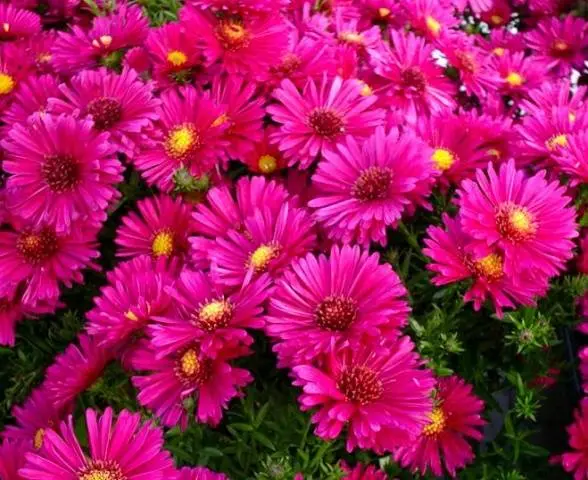
Lady in Blue
One of the varieties of summer alpine aster. The height of the shoots is a maximum of 40 cm, the bushes have the shape of the correct half of the ball. The diameter of the flowers is 3-3,5 cm, the petals are painted in blue-blue shades. Flowering at Lady in Blue is long – at least 35 days.

Gremlin
Varieties called Gremlin are meant for cutting. The stems of these asters are straight and long, and the inflorescences consist of oblong tubular petals collected in large pompoms. Astra Gremlin Sunny Day is painted in a cheerful yellow hue. There are also varieties with red, purple and orange flowers.
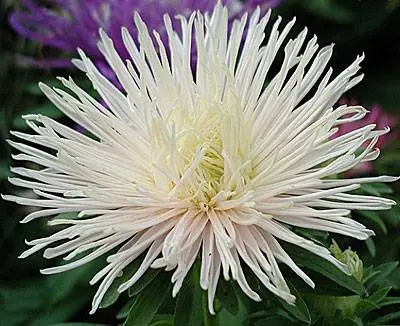
Maaka
A rare variety of perennial asters that naturally lives in the Far East. The bushes of these flowers grow up to 80-85 cm. The inflorescences are basket-shaped, their petals are painted in delicate blue-blue shades. The middle of Maaki is bright, yellow.
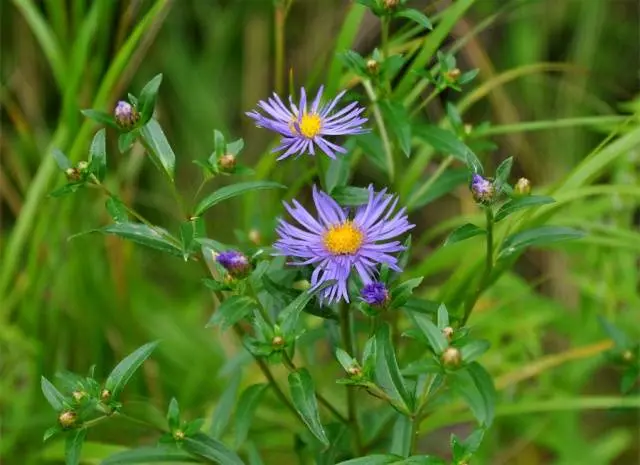
Maria Ballard
One of the New Belgian varieties of shrub asters. Aster with long and even stems is great for cutting. The rich blue hue of the flowers blends perfectly with the yellow-gold gamut of the autumn garden.

Apollo
The height of the bushes of this aster is small – about 30-40 cm. Apollo’s inflorescences are snow-white, very similar to small daisies. Under good growing conditions, the shrub grows rapidly and can cover large areas.

Kassel
Compact border variety, forming neat spherical bushes 25-30 cm in height. Astra Kassel is excellent for group plantings, blooms from September to October. The shades of this perennial are lilac-lilac.
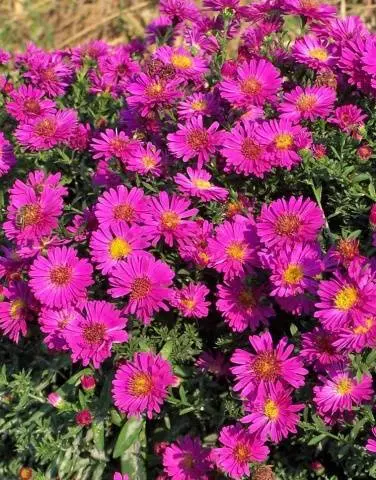
Sarah Ballard
New Belgian variety with semi-double flowers. The inflorescences are painted in a bright lilac shade, the center of the baskets is yellow. The bushes are quite high – from 80 to 100 cm. Sarah Ballard blooms from August until frost. You can use this aster for cutting.
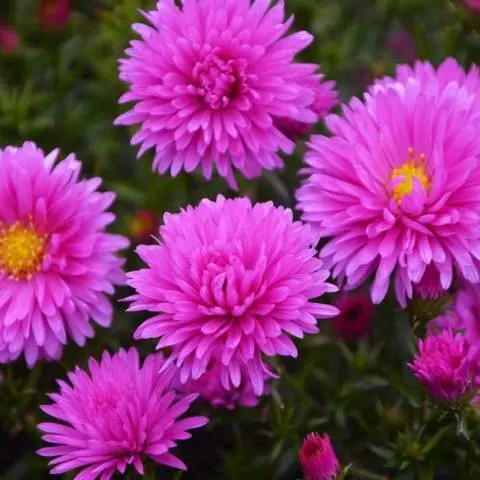
Starlight
Very picturesque aster with wine-red inflorescences. The bushes are neat, spherical, their height is small – about 30 cm. The Starlight variety is often used for pot growing, compact plants can frame ridges, decorate alpine slides.
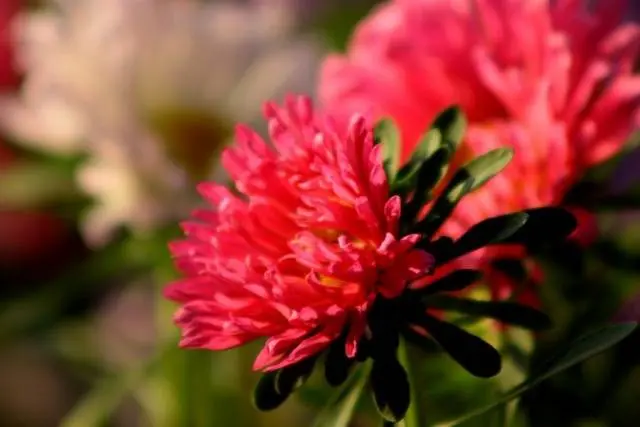
Growing rules
It is not difficult to grow a perennial shrub aster, because the plant is unpretentious, requires the simplest care and a minimum of attention from the grower. The most important thing is to choose a suitable place for flowers. Asters love the sun, but do not tolerate extreme heat and drought.

It is better to propagate perennial varieties by dividing the bush. It is preferable to do this in the spring so that the flowers have time to acclimatize and develop the root system. The planting pattern depends on the height of the asters: undersized varieties are planted at intervals of 20-30 cm, the highest bushes are no thicker than 50-80 cm.

Caring for perennials is as follows:
- Regular watering during dry periods and more frequent irrigation during the stage of active growth of green mass.
- Careful loosening of the soil between waterings or mulching, which is safer, since the root system of asters is superficial.
- Infrequent top dressing with rotted manure, bird droppings or peat, mineral fertilizers with an emphasis on phosphorus (flowers need to be fertilized once a year, starting from the second year of life).
- Annual liming of acidic soil (lime is simply poured onto a bush cut before winter).
- Tying tall varieties and sprawling shrubs.
- Pinching the tops of the shoots allows you to get more abundant flowering.
- Pruning asters before wintering – the stems are shortened to 10-15 cm.
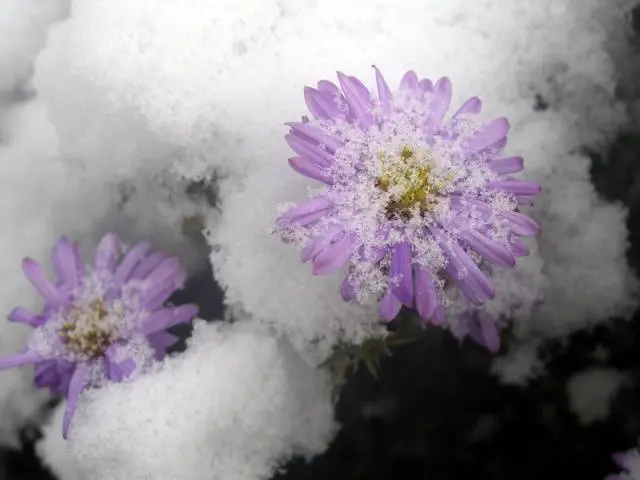
Conclusion
Properly selected varieties of perennial asters will delight with lush flowering throughout the warm season. The variety of species and varieties of these shrubs is simply amazing: every grower will be able to choose something suitable for his site. Most of all in perennial flowers their unpretentiousness and amazing frost resistance are valued.









